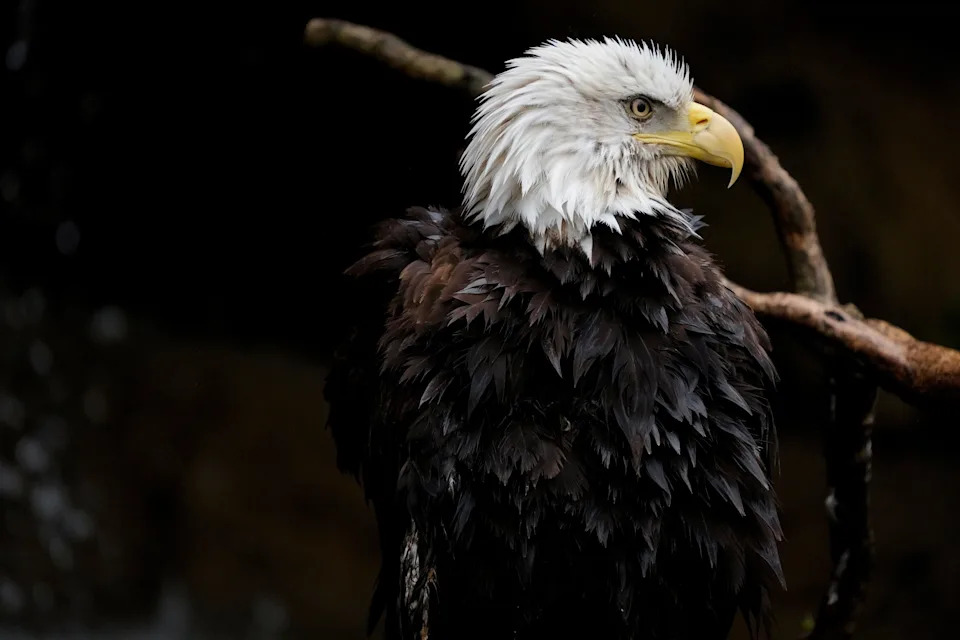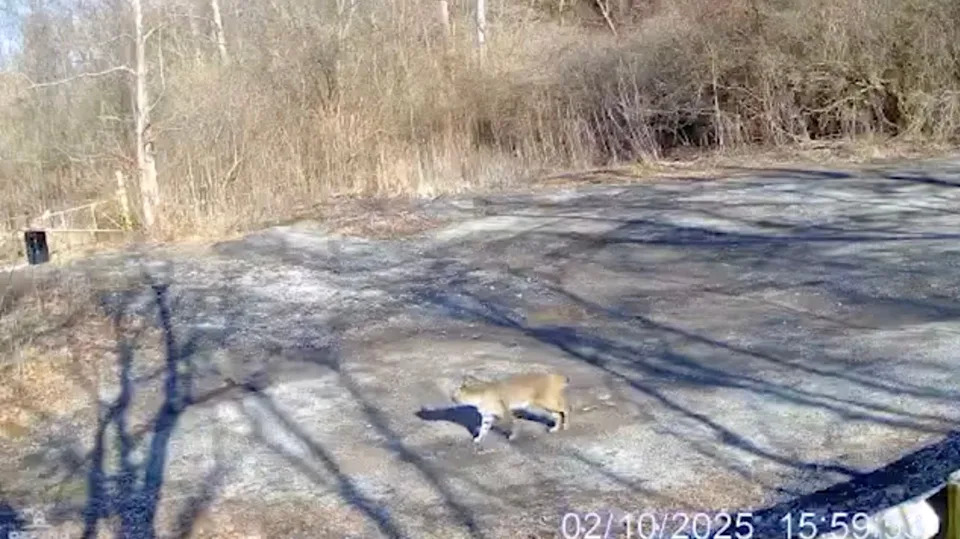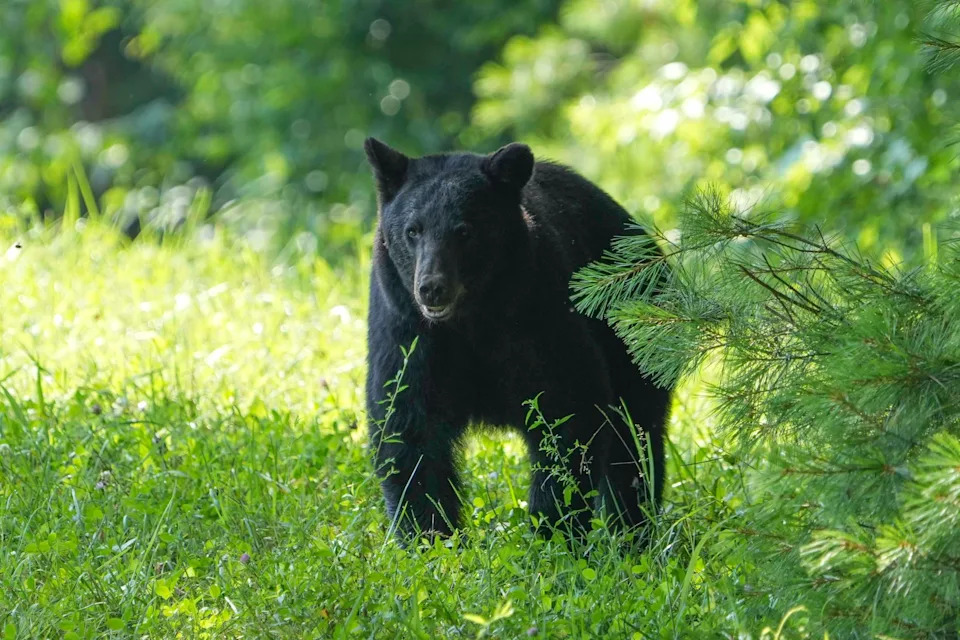Three species are returning to Ohio (and to Greater Cincinnati).
Bald eagles, bobcats and black bears were once considered rare sightings, but their populations are on the rise, according to data from the Ohio Department of Natural Resources.
Kathy Garza-Behr, wildlife communication specialist for the department, said these three species are thriving due to habitat restoration and protection. Additionally, all three are protected from harvest in the Buckeye State.
"There is no legal season," she said. "We are also able to verify more reports than in the past. That is due to technology, phones and security-type cameras."
Ohio's bald eagle nest population is soaring
A bald eagle nest census conducted by the Ohio Department of Natural Resources' Division of Wildlife, and released July 3, found the number of active nests (defined as having eggs, eaglets or an incubating eagle present) is soaring.
The 2025 census confirmed the presence of 964 bald eagle nests across 87 of Ohio's 88 counties. That's a 36% increase from the 707 nests counted in the last statewide census conducted in 2020.

Bald eagles were added to Ohio's endangered species list in 1974 as the nation's bird population declined nationwide, largely due to the use of pesticides, such as DDT, which led to reproductive failure by weakening eggshells. Bald eagles were added to the federal endangered species list in 1978.
By 1979, there were only four nesting pairs left in Ohio.
Bald eagles were delisted as federally endangered in 2007, following the nationwide ban of DDT in 1972 and implementation of various legal protections and reintroduction programs.
The bird was also removed from Ohio's endangered species list in 2012, thanks to conservation efforts involving the Division of Wildlife, Ohio zoos, wildlife rehabilitation facilities, landowners and conservationists, according to the Department of Natural Resources.
"The bald eagle is one of Ohio's great conservation success stories," Mary Mertz, Ohio Department of Natural Resources director, said in a July 3 press release. "The eagle's remarkable comeback over the last few decades, both in Ohio and nationwide, proves how much we can accomplish when we conserve and protect habitat."

These are the 13 Ohio counties with the highest number of bald eagle nests:
Ottawa (112)
Sandusky (61)
Erie (40)
Seneca (36)
Wyandot (31)
Trumbull (29)
Lucas (27)
Huron (21)
Wood (20)
Coshocton (19)
Knox (19)
Licking (19)
Mercer (19)
Ohio’s only native wildcat is also making a comeback
The state's only native wildcat is also making a comeback.
While bobcats are rare in Ohio, sightings have become more frequent in recent years, according to sightings data compiled by the Ohio Department of Natural Resources.
Native to Ohio, bobcats were common in the state until overhunting and loss of habitat drove them away in the mid-1800s. They were considered locally extinct by 1850. Occasional sightings began ramping up in the early 2000s, as bobcat populations in neighboring states made their way back to Ohio, according to data from 1970 to 2020.
According to the Ohio Department of Natural Resources website, there have been 4,159 confirmed sightings in 81 of the state's counties from 1970 to 2021, with the most common sightings occurring in southeast and southern Ohio.
"While sightings are less common in far Southwest Ohio (Butler and Hamilton counties), females with kittens have been observed in these counties in recent years, indicating that a small resident population is present in this area," the department's website reads.
In February, a bobcat was spotted at the Richardson Forest Preserve, a 413-acre preserve located at 4000 W. Kemper Road in Colerain Township.

Black bear sightings on the rise
Similar to bobcats, the black bear population is on the rise after experiencing a population decline in the 1800s due to hunting and habitat loss. By the 1850s, black bears were considered locally extinct, per the Ohio Department of Natural Resources.
Although black bears are still considered endangered in the Buckeye State, reported sightings are growing, according to the department, with most observed in northeast and southeast Ohio.
In 2022, the most recent year data is available in the monitoring report, Ohio had both its highest sightings and confirmations of black bears on record, with 285 sightings reported in 52 counties.
Here are the numbers dating back to 2019:
2019: 176 sightings, 77 confirmed.
2020: 154 sightings, 76 confirmed.
2021: 159 sightings, 61 confirmed.
2022: 285 sightings, 161 confirmed.
According to the Ohio Department of Natural Resources, black bear sightings occur throughout the year but are most common in late May through early July.
Several black bear sightings across Southwest Ohio
In Greater Cincinnati, at least one black bear was spotted roaming around a home on Aspenhill Drive in Springfield Township on July 7. A Greenhills police officer also reported seeing a black bear on the Commons that same morning. However, it's possible they saw the same bear. The two locations are about an hour apart on foot, according to Google Maps.

Around that time, there were six black bear sightings across Southwest Ohio within 10 days, the Ohio Department of Natural Resources said July 8.
Here is where the bear sightings were reported:
Saturday, June 28: Yellow Springs.
Sunday, June 29: East of Xenia, north of State Route 3.
Monday, June 30: East of Xenia, south of U.S. Route 35.
Wednesday, July 2: Oregonia.
Saturday, July 5: West Chester.
Sunday, July 6-Tuesday, July 8: Forest Park/Greenhills.
Spot a bear in the wild? Ohio Department of Natural Resources Division of Wildlife wants to know
Did you see a bear? The state's Division of Wildlife wants to know. Report sightings online at wildohio.gov or the Wildlife Species Sighting Report. You can also contact your local county wildlife officer or regional District Wildlife Office.
This article originally appeared on Cincinnati Enquirer: Bald eagles, bobcats and black bears are back in Ohio. What to know








Comments